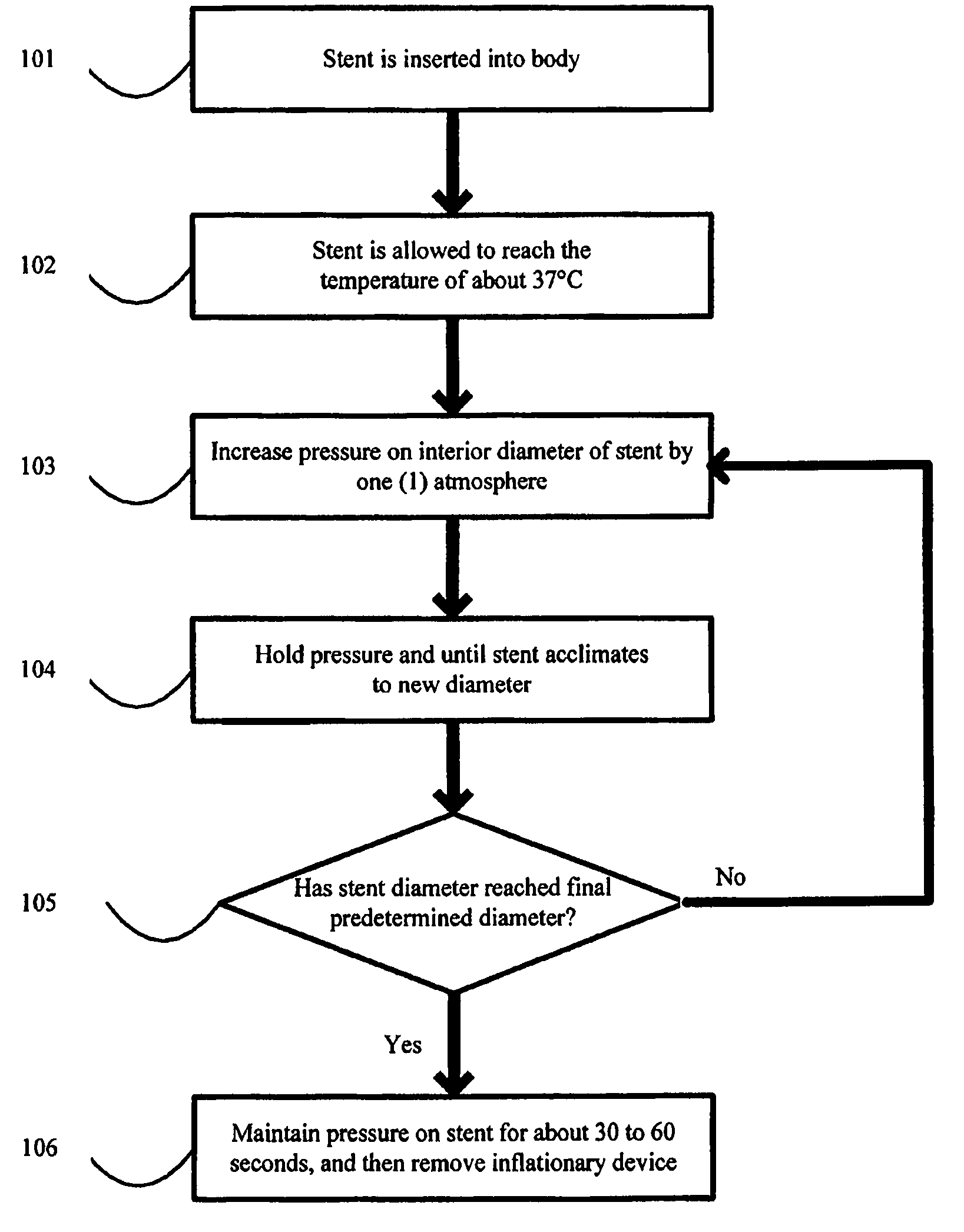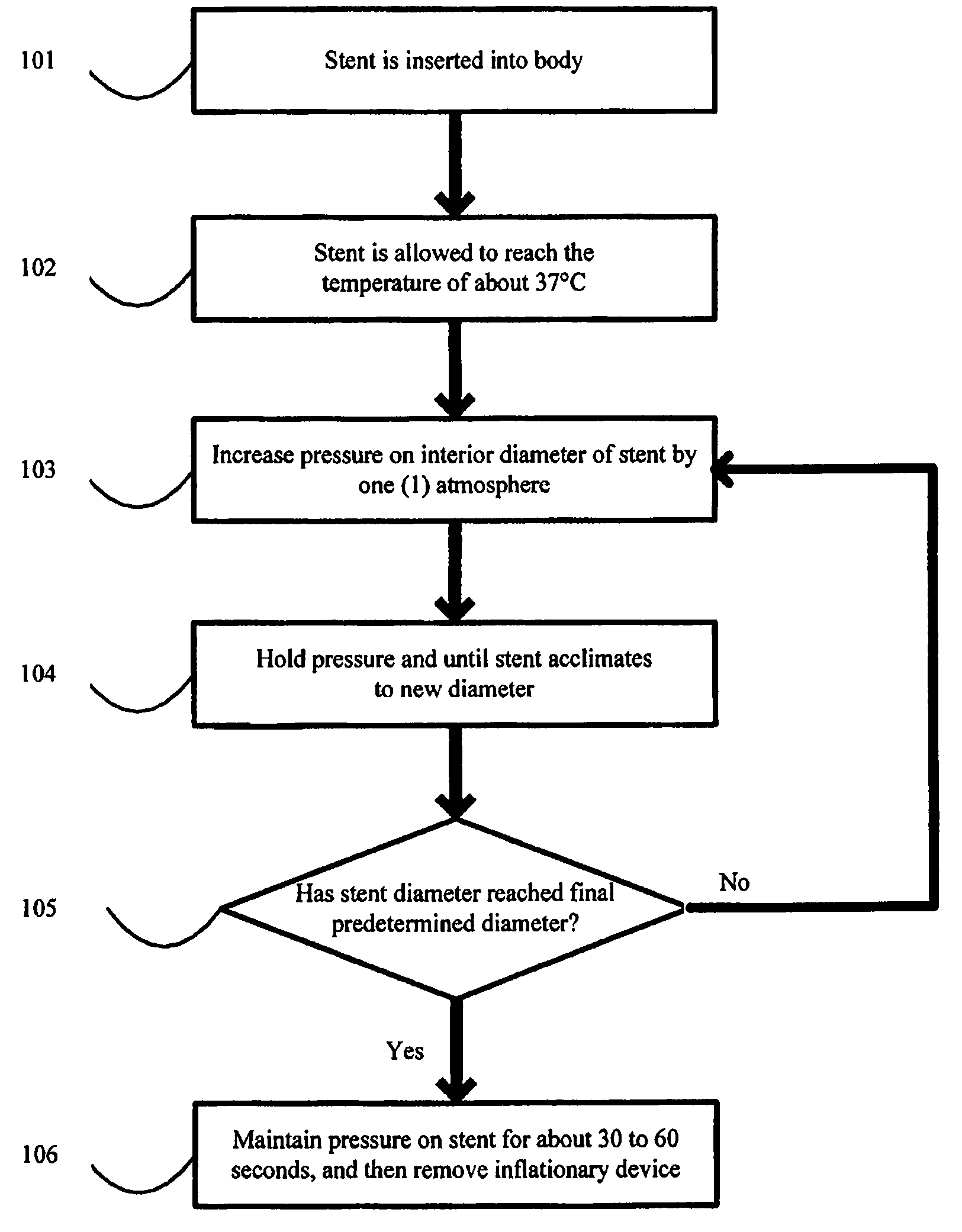Method for expansion and deployment of polymeric structures including stents
a polymer structure and polymer technology, applied in the field of polymer structure expansion and deployment including stents, can solve problems such as complete mechanical failure of stents, and achieve the effect of increasing the diameter of stents
- Summary
- Abstract
- Description
- Claims
- Application Information
AI Technical Summary
Benefits of technology
Problems solved by technology
Method used
Image
Examples
Embodiment Construction
[0011]Definitions:
[0012]“Bioresorbable polymer” as used herein refers to a polymer whose degradation by-products can be bio-assimilated or excreted via natural pathways in a human body.
[0013]“Acetone bath” as used herein refers to a bath comprising one or more solvents, where the solvents may be acetone, chlorinated hydrocarbons, and / or ketones. The polymeric stent fabrication method includes partially or fully immersed the polymeric stent into the acetone bath.
[0014]“Crimping” as used herein refers to a process that involves radial pressing on a polymeric cylindrical device having slits, or openings in the wall thereof to allow a decrease in the diameter of the device without substantially affecting the thickness of the wall or struts of the cylindrical device. Such process, typically also results in an increase in length of the cylindrical device.
[0015]“Degradable polymer” or “biodegradable polymer” as used herein refers to a polymer that breaks down into monomers and oligomers wh...
PUM
| Property | Measurement | Unit |
|---|---|---|
| temperature | aaaaa | aaaaa |
| glass transition temperature | aaaaa | aaaaa |
| glass transition temperature | aaaaa | aaaaa |
Abstract
Description
Claims
Application Information
 Login to View More
Login to View More - R&D
- Intellectual Property
- Life Sciences
- Materials
- Tech Scout
- Unparalleled Data Quality
- Higher Quality Content
- 60% Fewer Hallucinations
Browse by: Latest US Patents, China's latest patents, Technical Efficacy Thesaurus, Application Domain, Technology Topic, Popular Technical Reports.
© 2025 PatSnap. All rights reserved.Legal|Privacy policy|Modern Slavery Act Transparency Statement|Sitemap|About US| Contact US: help@patsnap.com


